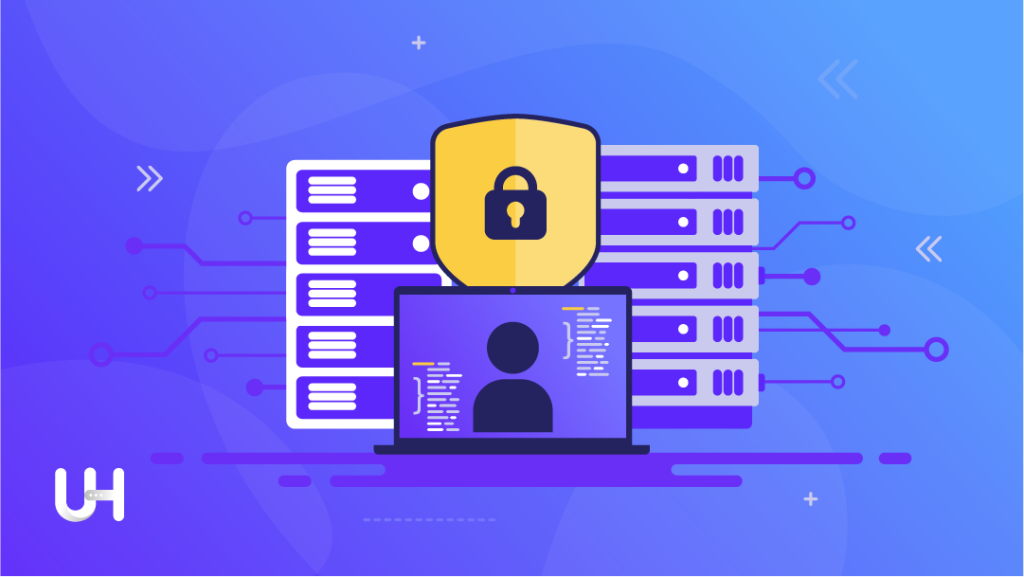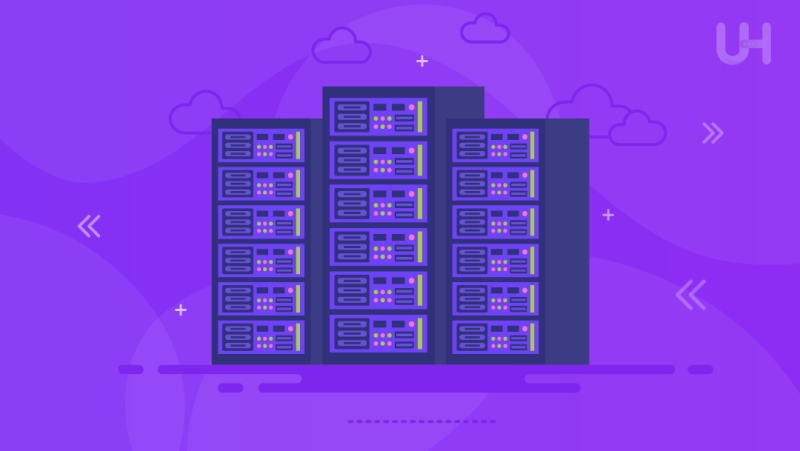Nowadays, data is the core of advancement in digital technology, and data centers act as the keepers of this precious material. So, what is a data center, exactly? Data centers are the basis of the modern digital era.
In this article, we offer a thorough definition of data centers and an in-depth analysis of the data center servers’ infrastructure. With the help of various data center types – from the hub of a large enterprise to cloud-based systems – we guide you through the realm of data centers.
What is a Data Center?
Selecting an eCommerce hosting provider for your e-commerce website or business application has its merits, including personalized client service, high uptime, and paying less for all operational expenditures.
However, not all hosting dedicated servers are equal. Your possible hosting experiences depend on the type of data center in use, as the infrastructure impacts the app’s performance and the website loading times.
In a physical sense, a data center is a facility that houses computer systems and related components. It can also be defined as a building used to store, manage, process, and disseminate substantial volumes of data. A standard data center is a group of technically interconnected computers, storage equipment, server systems, computing infrastructure, and cooling apparatus.
Physical data centers were critical pieces of business infrastructure in the past. Primarily, large firms with intensive computing processes, substantial data collection, and other technological demands used them. However, such structures require substantial investment.
Today, third-party businesses utilize centers for a broader cluster of end-users, and the cost of maintaining facilities is no longer a barrier. Now, anybody can get access to a data center, renting some quantity of resources for a limited period rather than purchasing an overall computing infrastructure.
Infrastructure of Data Center Servers

The Telecommunications Industry Association (TIA) expanded its standards on data centers in 2005 with TIA-942. Similarly, TIA-942 covers all aspects of a data center, including architecture, safety, physical security, redundancy, and environmental considerations.
The TIA-942 framework defines four levels of tiers for data centers depending on which data center infrastructure is surveyed.
Tier 1
Tier 1 data center facilities serve as the base of the site’s infrastructure. They are usually located within an organization’s office premises and support the IT system in the building. Tier 1 facilities are equipped with an uninterruptible power supply to protect against possible power outages and voltage changes. Additionally, they provide a designated space for IT systems, including the physical plant, a cooling system, and a backup power source.
Tier 2
Tier 2 data centers have enhanced component site infrastructure compared to Tier 1. They comprise additional cooling infrastructure such as chillers, cooling units, exhaust fans, and more. Tier 2 offers better serviceability and resilience to failures than Tier 1 because it allows component replacement without affecting the overall system. However, unexpected failures might still impair operation, with potential downtime of up to 22 hours.
Tier 3
The data center has high levels of data redundancy with the ability to concurrently sustain equipment maintenance or replacement without any form of a system outage. These support systems, such as power and cooling units, have a yearly downtime likelihood of less than 1.6 hours.
Tier 4
Tier 4 data centers represent the Fault-Tolerant Site Infrastructure. This means that physically isolated systems are used to mitigate disruptions caused by both planned and unplanned events. As a fully redundant option with fault tolerance, Tier 4 site infrastructure can guarantee that disruptions do not exceed 26 minutes per annum.
Maximize Your Data Center Efficiency with UltaHost!
Ready to enhance your data center infrastructure? Explore UltaHost’s Fully Managed Dedicated Servers and experience unparalleled performance, reliability, and security for critical workloads.
Types of Data Center
Various types of data centers exist, depending on their size and administration. These encompass managed data centers, enterprise data centers, hyperscale data centers, colocation data centers, cloud-based data centers, and edge data centers.
Managed Data Centers
Managed data centers, operated by third-party entities, are external facilities distinct from fully-owned data centers. Leased to many clients and firms, it offers sizable storage capabilities and better-quality computer solutions. They are highly useful for corporations wanting to offload all their data storage and CPU demands to a far more accessible-to-use data center service under the control of an equipment operator and do not need a purchase of the infrastructure.
Enterprise Data Centers
Enterprise data centers are individual companies’ proprietary facilities used to meet their unique storage and computational needs. It is the most expensive setup, but most organizations go this way due to their unique data and networking demands. Enterprises’ data centers are usually local, situated on-site within the company’s specially allocated area. Nevertheless, some companies procure an off-site data center that has better power infrastructure, connectivity, and security. Off-site facilities are a great resource for keeping companies’ and clients’ data safe when any disaster affects the facility. Additionally, implementing robust data room security measures from data room services can further enhance the protection of sensitive information stored in off-site data centers.
Hyperscale Data Centers
Hyperscale data centers are the largest venues, with extensive infrastructures that host large IT installations, such as those executed by social media outlets and search machines.
Many large businesses, such as Amazon, Google, and Microsoft, have hyperscale data centers developed to meet big data’s massive storage and cloud computing demands.
Whereas traditional data centers may have tens of servers, hyperscale data centers can accommodate thousands of individual servers. For example, a typical hyperscale data center might contain roughly 5,000 servers within an area of less than 10,000 square feet.
Colocation Data Centers
Colocation, or multi-tenant data centers, is preferred for businesses looking to save space and host their servers externally. VDS hosting providers typically own these facilities and are equipped with power, security, cooling, and networking facilities. A colocation data center is a good option for:
- Resource conservation: Instead of using some of the precious business space to construct a data center, you can rent the space in the colocation facility to house your servers.
- Outsourcing IT requirements: The IT expertise provided by the colocation provider frees up your business assets to invest in other business activities.
- Rapid growth or downsizing opportunities: You can rapidly rent more space as your business grows or lease less space when downsizing. This could be done more quickly than creating and maintaining a company data center with little wasted space.
Cloud-based Data Centers
Cloud-based data centers are third-party-operated, decentralized facilities that allow users to rent space and infrastructure via the cloud. Typically, a virtual data center can be provisioned in a few hours, minimizing the time spent on capital installation and commission. Hence, users enjoy a significant reduction in capital investment related to hardware, IT staffing, and maintenance. Cloud-based web hosting can also scale rapidly and share resources while maintaining efficiency via uptime, bandwidth, and redundancy.
Edge Data Centers
Usually smaller in size than other types, edge data centers are geographically placed to provide low-latency data exchange, often in close proximity to end-users. They are most utilized for time-sensitive responses such as IoT, emergency response, and automation and serve specific performance needs such as low-latency communication.
How are Data Centers Managed?
There are various aspects to data center management. These include:
- Facility management – it involves managing the physical data center server location, including real estate, utilities, and personnel access control, among others
- Inventory and asset management – This involves tracking software licensing, hardware asset inventory, and release management in data center facilities.
- Data Center Infrastructure Management (DCIM) integrates IT and facility management. It involves monitoring the data facility’s performance to ensure optimal energy usage, equipment utilization, and floor space.
- First-line support – The data center offers technical services to an organization, and the facility is responsible for providing first-line support to the organization’s end users
- Operations – data center management also involves day-to-day operations that the facility is providing
- Infrastructure monitoring – Data facilities use monitoring tools that help IT administrators remotely monitor the facility’s operations performance, measure failure, and take corrective measures without a physical presence.
- Energy efficiency – Managing in a data center is important. Small data centers consume less energy; however, enterprise data facilities consume more than 100 megawatts. A green data center is environmentally friendly, and the use of low-emission materials and alternative energy has been popular as a measure to minimize environmental impact.
- Security and safety – data center design essentials are safety and have priority in security among the aspects that have been considered during design, including space allocation from equipment movement and emplacement department people to installing suppression systems.
Conclusion
Data centers are essential in the digital age as they are guardians of priceless information. Everything from the physical infrastructure to management frameworks helps businesses and other organizations to function correctly. Companies can use many types of data centers, such as green data centers and colocation structures, to organize data. These centers are continuously improved to offer extra efficiency and security as they are vital to driving technology in the future. They have been at the forefront of technological development for the last seven decades and show no signs of slowing down.
Experience seamless performance and scalability with UltaHost’s VPS Hosting. Our state-of-the-art data center infrastructure ensures optimal reliability for your virtual servers. Benefit from optimum flexibility, unlimited bandwidth, and performance at an unbeatable price.
FAQ
Are there alternatives to traditional data centers?
Yes, cloud-based data centers offer scalable, on-demand infrastructure accessible via the cloud, eliminating the need for on-premises hardware and maintenance.
What is the role of edge data centers?
Edge data centers, positioned close to users, minimize latency for time-sensitive applications like IoT, ensuring faster data exchange and supporting emerging technologies.
How do colocation data centers benefit businesses?
Colocation centers allow businesses to outsource server hosting, conserving resources like office space while leveraging the provider’s infrastructure expertise for rapid scalability and cost-effective management.
What are the advantages of managed data centers?
Managed data centers offer personalized support, robust infrastructure, and cost savings by offloading data storage and computing needs, ensuring high uptime and efficient resource utilization tailored to the organization’s requirements.








